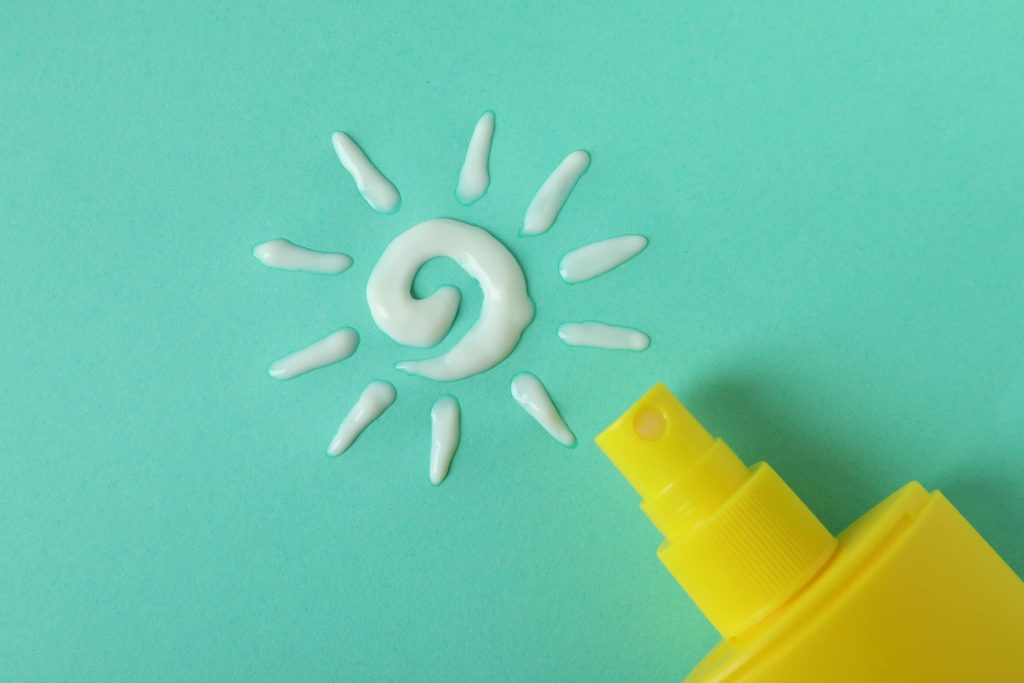We’ve always been told to wear sunscreen everyday, but do you know why this should be a non-negotiable in your skin care regimen? Essentially, wearing sunscreen is one of the best ways to protect your skin from ultraviolet (UV) rays that could lead to skin cancer. On the plus side, it also shields your skin from pre-mature aging, discoloration, and inflammation.
The first sunscreen was created in 1938 by Swiss chemist Franz Geiter after he got sunburned while climbing Mt. Piz Buin. In less than a decade, he developed and commercialized the first modern sunscreen called “Gletscher Crème,” or Glacier Cream. His brand, Piz Buin, which still exists today, is named after the mountain which inspired him to create the sunscreen.
Geiter is also credited for inventing the Sun Protection Factor or SPF which became the standard for testing sunscreen formulations. His invention, the original Glacier Cream, has an SPF rating of 2.
Over the years, formulators began to develop water-resistant sunscreens with higher SPFs. There are products for all skin types that you can even wear over your make-up, or if you’re planning a day on the beach since there are also reef-friendly kinds.
If you need a little more convincing to make sunscreen a part of your daily routine, read on below to find answers on some of your concerns regarding this must-have.
SUBHEAD: How does it work?
Sunscreen serves as your protection from harmful UV rays which could penetrate your skin upon exposure. There are two types of UV rays—UVA (Ultraviolet A) and UVB (Ultraviolet B). UVA rays can penetrate deep into the skin and is the primary cause of pre-mature aging and wrinkles. UVB, on the other hand, can only affect the outer layer of the skin and can cause sunburn. However, both UVA and UVB can cause skin damage which can lead to skin cancer. To address this, you can use a broad-spectrum sunscreen because it provides the most comprehensive protection.
When you apply sunscreen, it creates a protective barrier that could absorb or reflect the sun’s rays. It is advisable to lather it at least 30 minutes before going out to give it time to be absorbed by your skin.
You should apply it to all exposed parts of your body, and make sure it is at least SPF 30 or higher. If you can avoid it altogether, do not get exposed to the sun between 10am to 4pm, when its rays are at its strongest.
Types of sunscreen
While there are different formulations for sunscreen—gel, cream, spray, powder, and stick; there are only two types to choose from depending on your skin type.
Chemical sunscreens are light in texture and absorb UV rays and convert them into heat. Because of its light texture, it is easy to apply onto the skin. It is a good choice for people with darker complexion since it does not a leave a white cast. For some, chemical sunscreen can sting, so as with all skin products, it is always wise to do a skin patch test before using.
Mineral sunscreen, also called physical sunscreen, is your best bet if your skin is acne-prone. They protect you from the sun’s harmful rays by reflecting UV away from the skin. This type is thicker in texture which makes it harder to apply onto the skin which can result to a white cast for some.
Essential ingredients for sun protection
Once you’ve decided which type to use, there are essential ingredients that you should look for in a sunscreen.
The most common active ingredient, oxybenzone, is a chemical that absorbs UV light. Once applied to the skin, it absorbs light and immediately converts it into heat, which is then scattered from the body. Both effective for UVA and UVB radiation, oxybenzone is also an ingredient for make-up and lip balm because of its UV-absorbing properties.
Like oxybenzone, avobenzone works against UVA and UVB. It absorbs UV light before it could damage the skin by absorbing the ultraviolet rays and releasing its energy as heat. It is often combined alongside other filters because on its own, it may lose 50 to 90 percent of its UV-fighting abilities within an hour of sun exposure.
Octinoxate is a common ingredient in sunscreen products that absorbs UVB rays but is less likely to cause skin reaction. This ingredient is often used together with other UV filters and is found in 90% of sunscreens in the United States according to Medical News Today.
Generally recognized as safe and effective and approved by the United States Food and Drug Administration for use in children six months and above, titanium dioxide is another broad-spectrum UV filter. This natural mineral whitens, thickens, and lubricates the skin upon application while reflecting and absorbing ultraviolet rays.
Finally, zinc oxide is a sunscreen ingredient used for centuries that does not show evidence of skin penetration even after repeated use, according to a 2018 study. Zinc dioxide acts as a physical barrier against sun’s rays and is safe even for sensitive skin. It is so widely used that you can also find this ingredient in diaper rash creams, and ointments for cuts and burns.
Reef-friendly sunscreens
A day on the beach isn’t complete without sunscreen, but you should be mindful of the products that you’re going to use especially if you’re planning to do more than sunbathing.
To ensure the safety of all marine life, choose a mineral-based broad-spectrum sun protection with zinc oxide and titanium oxide. These two ingredients are known for forming a physical block between your skin and the sun’s harmful rays while having less impact to reefs. In fact, both ingredients are not associated with coral bleaching.
While safe and effective against UV rays, products with oxybenzone and octinoxate should be avoided if you’re planning to take a dip in the ocean, since these two are detrimental to coral health. In addition, do not use products which contain paraben since it causes coral bleaching.
To maximize the benefits of your sunscreen while in the ocean, use a lotion formula since it stays on for a longer time. It is also advisable to wear sun protective clothing like unbleached cotton which can act as UV absorber.
Is sunscreen needed even if it’s cloudy outside?
Unfortunately, some people think that they only need sunscreen if they’re going swimming or if they’re going to get exposed to the sun for a long time. In reality, ultraviolet rays are always present, and are not blocked by the clouds. Meaning, even if the sun isn’t visible, its harmful rays are still there that could cause damage to your skin.
Generally, sunscreen should be reapplied every two hours, especially if you’re sweating or swimming. A general rule of thumb is to use about two tablespoons of the product for all exposed parts of the body, except for eyelids.
While getting a sunburn might be uncomfortable, excessive sun damage can also cause pre-mature aging, wrinkles and make you look older than your actual age. In fact, the Skin Cancer Foundation estimates that 90% of skin aging is due to sun exposure. Even after a sunburn heals, ultraviolet rays might have penetrated the skin where it can damage and kill cells.
In conclusion…
Aside from wearing sunscreen, you can always go the extra mile to protect your skin from aging and skin cancer. Wearing protective clothing when going out, including sunglasses and hats can decrease your risk; along with avoiding tanning beds which is associated with melanoma, according to a study.
Protecting yourself from UV rays should be a priority. It might be a hassle to constantly worry about sun exposure whenever you go out, but it is worth the trouble. Outdoors activities are fun, but don’t forget your sunscreen!






